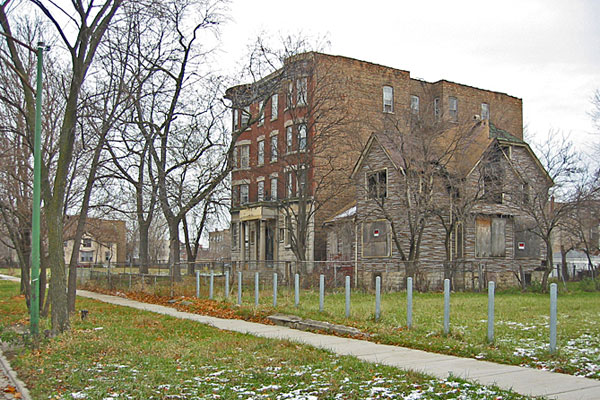
Progress Illinois’s Micah Maidenberg reports that Mayor Daley has proposed using TIF money to subsidize first-time homeowners who buy a vacant home requiring "substantial rehabilitation." It’s considerably different from the Sweet Home Chicago ordinance, which was focused on low-income households–between $22,600 and $60,300 depending on the specific aspect of the ordinance. (The Department of Housing and Urban Development’s 2010 limits for "30 percent of median" and "low income" are $22,500 and $60,100 for households of four in Chicago-Joliet-Naperville.)
Instead, Daley’s proposal has a higher limit: no greater than 100 percent of the HUD-determined median family income, which is $75,100 in 2010.
To see what Daley’s plan would get you, I entered the Chicago area median income into this "affordable mortgage" calculator, assuming a 20% down payment and $1,500 a month in debt. That gave me a range of about $70,000-$90,000 for a house. So I went shopping and found this house (it’s cozy, but well-located) to get a reasonable number for property taxes, which were $5,205 in 2009.
Perfect: $80,000. Assume $25,000 for renovations, the minimum to qualify as "substantial rehabilitation," and I’m at $105,000–at least $15,000 too high for the mortgage calculator, but within range of the ordinance. Under Daley’s proposal I’d be eligible for 25 percent of the base purchase price plus the renovations, or $26,250. If I took all of that, I’d be required to "occupy the eligible property as the eligible homebuyer’s principal residence" for at least 10 years.
The ordinance does a couple clever things. By requiring a fairly high minimum for substantial rehabilitation, defined as the "reconstruction, enlargement, installation, repair, alteration, improvement or renovation of a building, structure or portion thereof requiring a permit issued by the city," it makes it less likely that buyers will avoid homes that need substantial work. And it puts people to work doing the rehabilitation, rather than just going straight to the banks.
The rehab minimum is also a good chunk of the kind of house someone making $75,000 can afford. Since you get 25 percent of the purchase price plus renovations, if you’re looking to maximize your returns (I think this makes sense) you’d be more likely to buy a very inexpensive home that requires more rehabilitation, not less, especially if your income is lower. Cheaper homes requiring more work are the ones–and more often than not, in the neighborhoods–you’d want an ordinance like this to target. There are a lot of houses like that in Chicago, and they don’t come without cost.
In short, it enforces a good, practical range of rehab-to-price ratios.
What it doesn’t do is assist renters; the Sweet Home Ordinance would, by assisting developers who set aside certain percentages of rental units for low-income families. What it does do is expand that housing assistance to the middle class–whom, I think the example above makes clear, aren’t exactly swimming in housing options even after the bubble–and give homebuyers incentives to look in less-than-desirable neighborhoods. Oh, and stay there.
The homebuyer-versus-renter debate is a heated one, not just among economists, but urban planners as well. After all, the idea of homeownership as manifest destiny was one cultural aspect of the housing bubble. This ordinance comes down squarely on one side of that, which is a bit frustrating, especially since the Sweet Home Ordinance specifically targeted households at or below 30 percent of the median income: $15,800 for one person, $22,550 for four.
But that’s not to say its aims aren’t laudable, or that it’s not well-designed in many ways to serve them.
Photograph: EPA Smart Growth (CC by 3.0)


